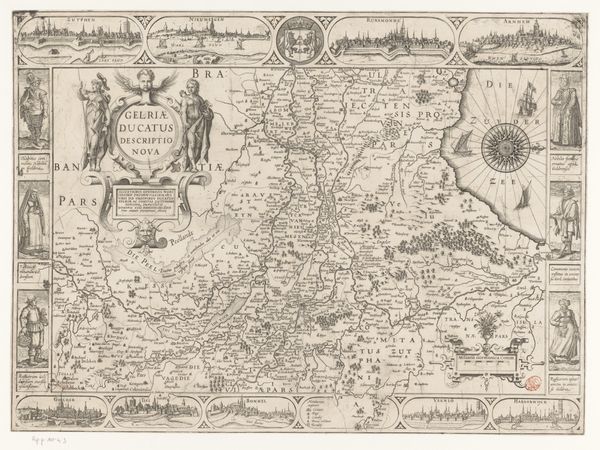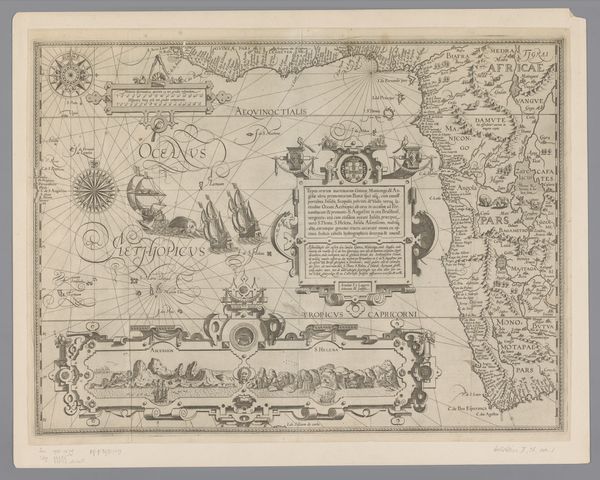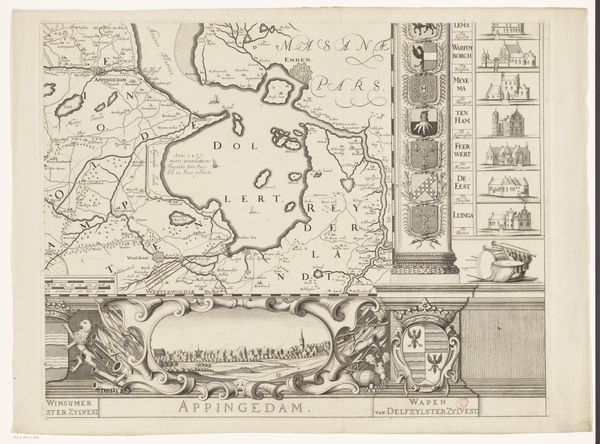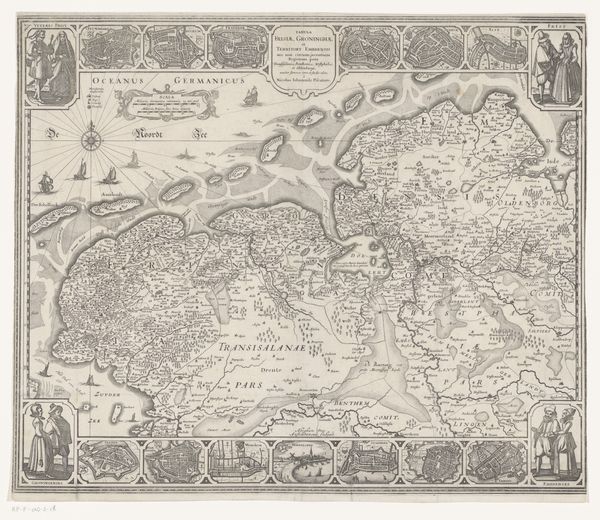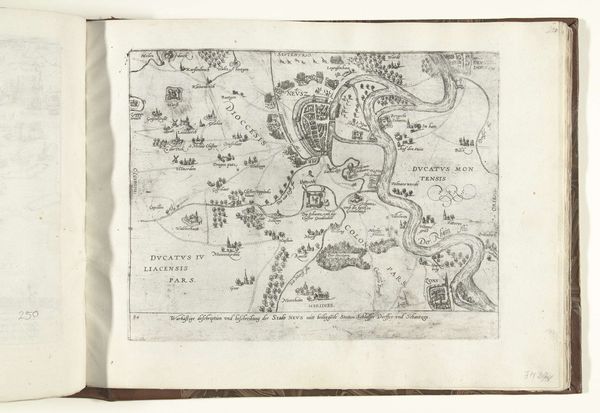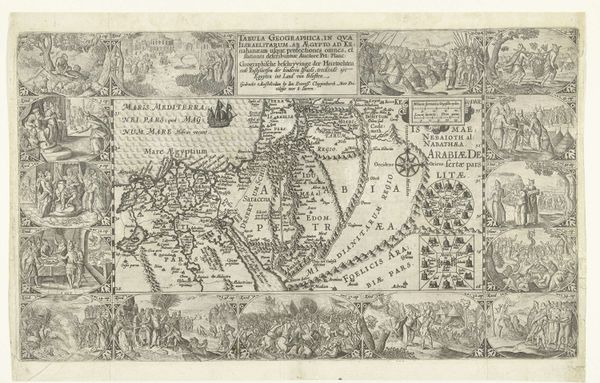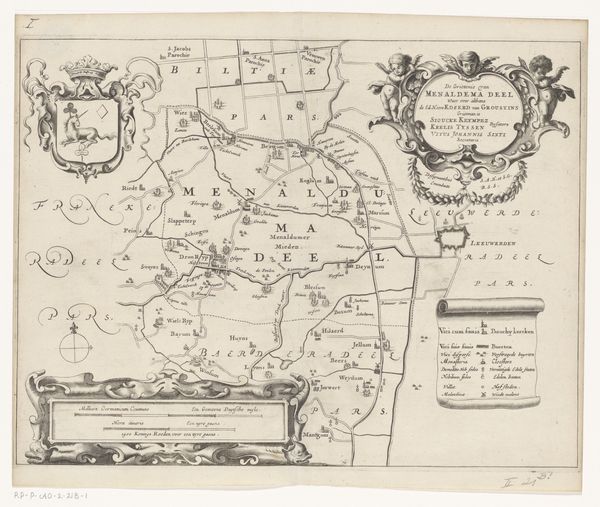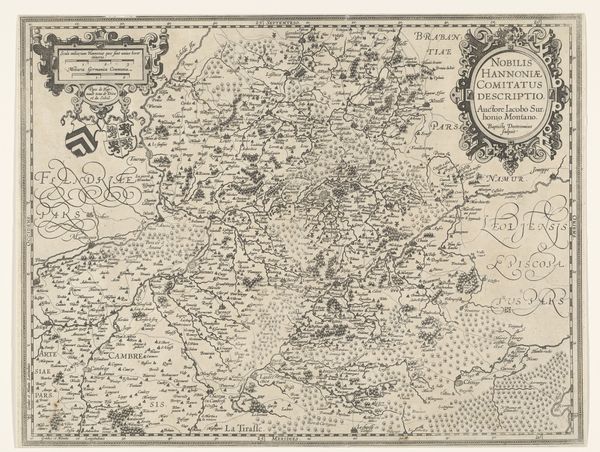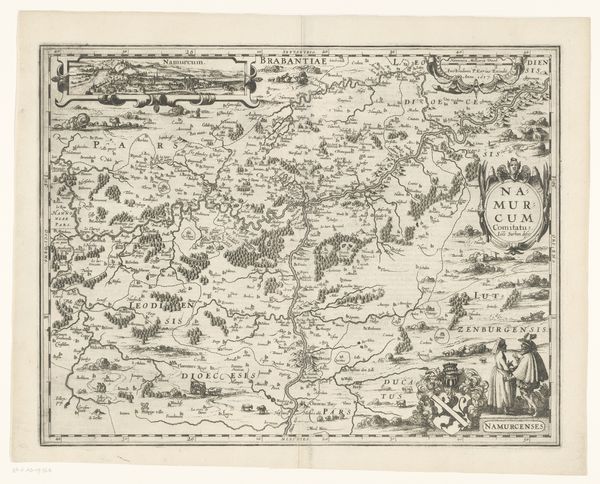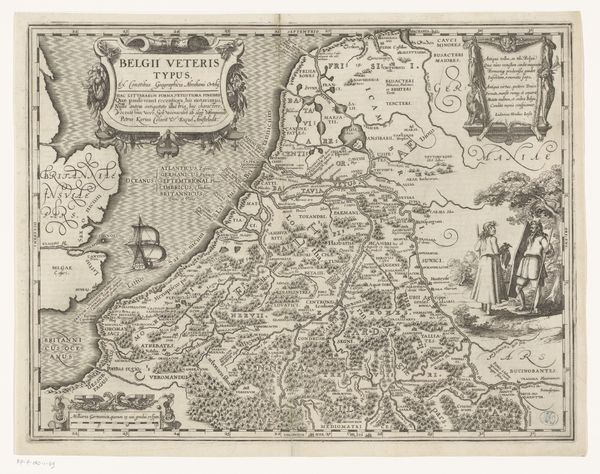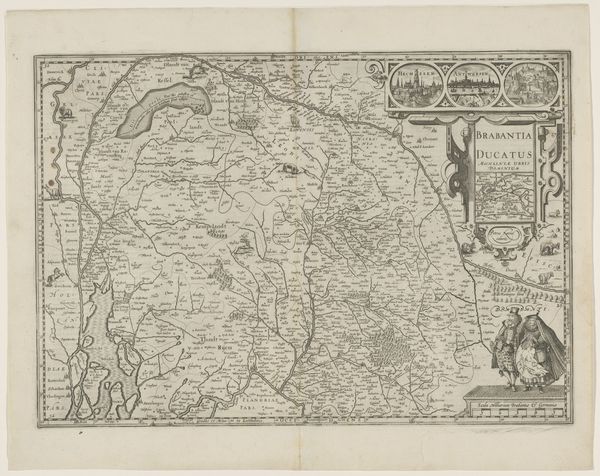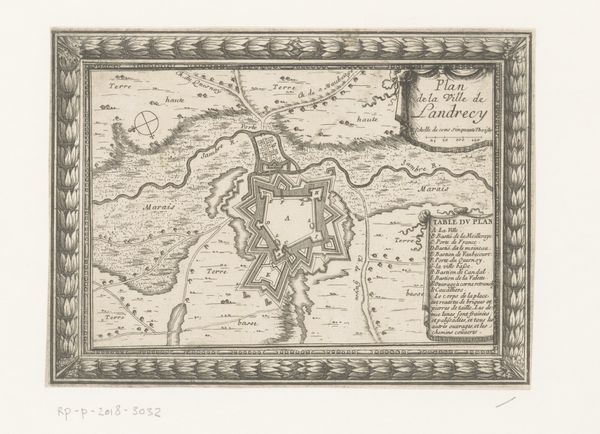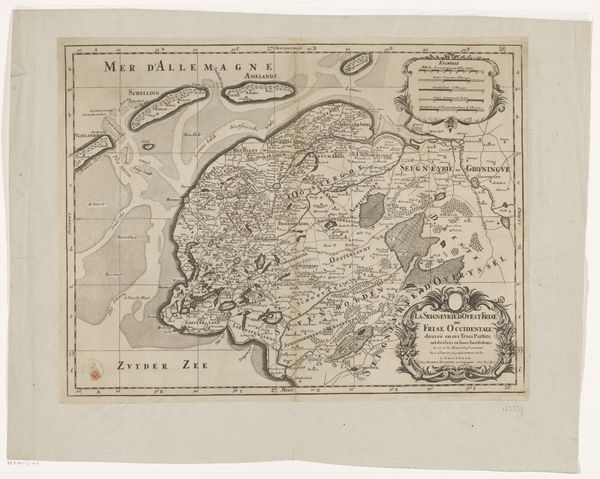
print, etching, engraving
#
dutch-golden-age
# print
#
etching
#
landscape
#
etching
#
personal sketchbook
#
engraving
Dimensions: height 447 mm, width 570 mm
Copyright: Rijks Museum: Open Domain
Curator: Looking at Pieter Feddes van Harlingen's "Kaart van Friesland" from 1622, now in the Rijksmuseum, I'm immediately struck by how delicately detailed it is, considering it's an etching and engraving. Editor: The detail does give a bird’s-eye feeling, almost like it's attempting to grasp the soul of the region itself, in its totality. I'm intrigued by how cartography becomes a political act here. Were these maps primarily tools for navigation or instruments of power? Curator: It’s both, I think. Consider how the visual language employed evokes a sense of established dominion and history. Coats of arms border the top, and a compass rose is presented prominently—visual testaments to power and exploration rendered with an artisan's devotion. The etching’s detail invests it with an authority. Editor: True, and by investing space with symbolism and graphic detail, the artist makes an assertion. It says: this land is known, understood, claimed. These weren’t neutral documents but claims, right? A Dutch assertion of their space at a moment of complex cultural and political maneuvering. I'm thinking of how marginalized groups would've engaged with this depiction. Whose narratives are privileged, and whose are obscured by the map? Curator: That's key. The symbols also point inward. These repeated shields aren’t only decorative flourishes, they also resonate locally with citizens. It roots viewers into shared experience by calling upon civic symbols that are meant to bind people together with regional pride. It’s a carefully constructed image of identity. Editor: And thinking about cultural continuity, the image performs a mnemonic function too. The print’s dissemination meant these visual representations helped imprint particular histories and narratives onto Friesland’s collective memory. And as they persist in collective visual awareness over centuries, what do these embedded historical viewpoints promote, and what do they eclipse? Curator: Fascinating. It invites a layering of perspectives that only enriches our experience of this symbolic landscape. I appreciate it anew now, in a slightly altered key. Editor: Exactly. I hadn't considered it that way myself until just now. Art re-shapes our very understanding, doesn’t it?
Comments
No comments
Be the first to comment and join the conversation on the ultimate creative platform.
